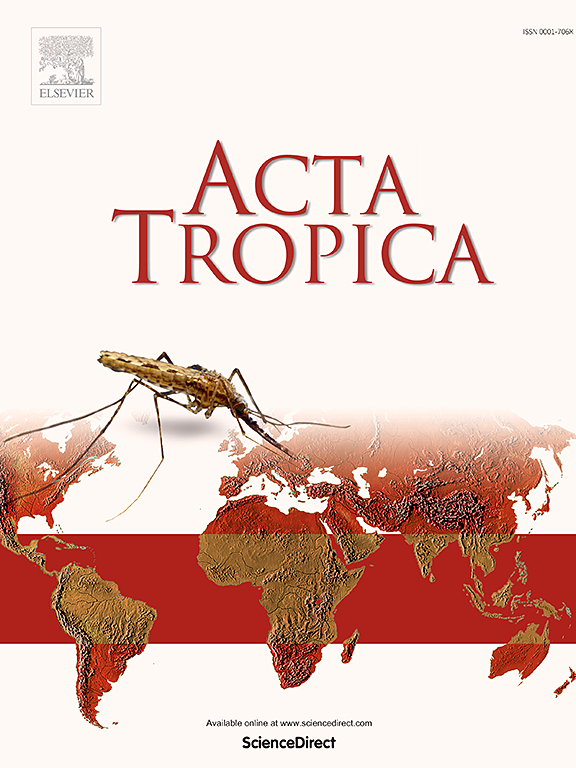Wing geometric morphometrics is effective to separate sand fly species (Diptera, Psychodidae, Phlebotominae) related with leishmaniasis transmission in Mexico
IF 2.5
3区 医学
Q2 PARASITOLOGY
引用次数: 0
Abstract
Nearly 32 % of sand fly species recorded in Mexico are related to Leishmania transmission. A correct morphological identification of sand flies is essential to improve epidemiological and control strategies. Wing geometric morphometrics (GM) has proven to be a complementary tool for classical taxonomy, allowing us to explore variations in structure and shape between species. This study evaluated whether the use of wing morphometric traits aids to identify vector sand fly species independently of their geographic distribution. The specimens were identified morphologically using specialized keys, and the right wings were analyzed using 17 landmarks. Principal Component Analysis, Canonical Variate Analysis, and Mahalanobis distances were calculated to quantify morphological differentiation. A total of 305 specimens from nine species were analyzed. Procrustes ANOVA showed significant differences (P < 0.0001) in shape and size for species, as well as significant differences across their distribution between populations of Lutzomyia cruciata (P < 0.0001) and Psathyromyia shannoni (P < 0.0001), respectively. The use of GM tools was effective to separate species at interspecific and intraspecific level, evidencing population differences in vector sand fly species that could favor the transmission of Leishmania.

翅膀几何形态测量法可有效分离与墨西哥利什曼病传播有关的沙蝇(双翅目,蠓科,白蛉科)。
墨西哥记录的近32%的沙蝇种类与利什曼原虫传播有关。正确的沙蝇形态鉴定对改进流行病学和控制策略至关重要。翅膀几何形态计量学(GM)已被证明是经典分类学的补充工具,使我们能够探索物种之间结构和形状的变化。本研究评估了使用翅膀形态特征是否有助于独立于其地理分布的媒介沙蝇物种的识别。使用专门的键对标本进行形态学鉴定,并使用17个地标对右翼进行分析。计算主成分分析、典型变量分析和马氏距离来量化形态分化。共分析了9种305份标本。Procrustes方差分析显示差异有统计学意义(P
本文章由计算机程序翻译,如有差异,请以英文原文为准。
求助全文
约1分钟内获得全文
求助全文
来源期刊

Acta tropica
医学-寄生虫学
CiteScore
5.40
自引率
11.10%
发文量
383
审稿时长
37 days
期刊介绍:
Acta Tropica, is an international journal on infectious diseases that covers public health sciences and biomedical research with particular emphasis on topics relevant to human and animal health in the tropics and the subtropics.
 求助内容:
求助内容: 应助结果提醒方式:
应助结果提醒方式:


